In nature, everything has a meaning, including the colours adorned by various species. For example, the stripes of tigers act as camouflage to help them hunt prey. The stick insects’ colour and appearance, blending them with the surrounding vegetation, make them less noticeable to predators. The vibrant colours of resplendent peacocks help them attract females for mating. Every colour, pattern, shape, and size in nature is put to its specific use. However, what happens when there is a diversion from the usual? When the genes go awry and create something that is out of the ordinary? Here, we will discuss one such condition called leucism in the five-striped palm squirrel, as noticed by BNHS researchers in Madhya Pradesh. So, what is leucism, and what are its possible implications for a species? Let us learn about it in this article.
The Discovery
It was a balmy September afternoon, right after the rains. Dr. Arockianathan Samson of BNHS, the Centre Manager of the Vulture Conservation Breeding Center (VCBC) at Bhopal, had just stepped outside his office building when, all of a sudden, his eyes caught something unusual. In the patchy forested habitat around the VCBC-Bhopal, four squirrels were busy foraging for food on the ground. There was nothing out of the ordinary about three of the individuals.

With their greyish brown pelage, three pale median stripes, and two pale stripes on each side, and a bottle-brush-like tail, they could be easily identified as five-striped palm squirrels, also called northern palm squirrels (Funambulus pennantii). The fourth one, however, was sporting a different colour – almost uniformly whitish-grey. Except for colour, however, this squirrel was similar to the others in appearance and was thus identified by Samson and his colleagues as a leucistic female five-striped palm squirrel.
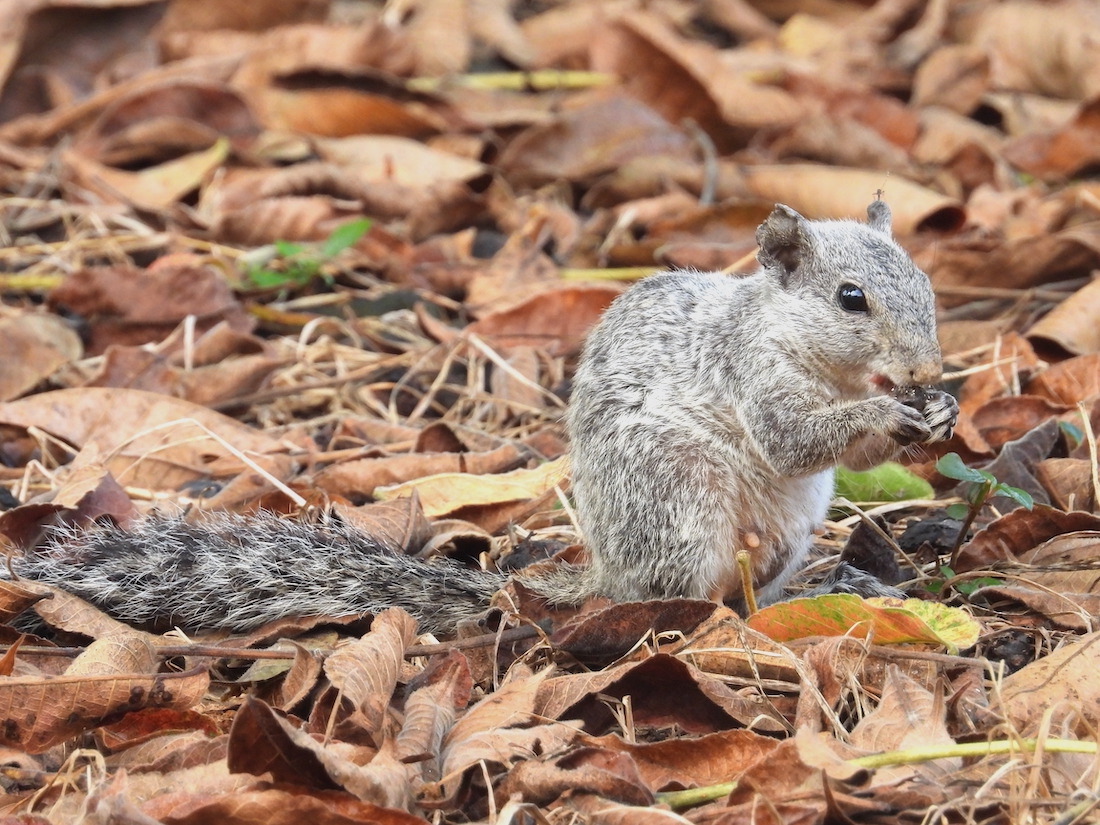
Such observation was the first of its kind reported in Madhya Pradesh, India. Previous reports of leucistic five-striped palm squirrels in India come from the Satara District of Maharastra in 2016 and Ghazipur, Uttar Pradesh and Dehradun, Uttarakhand, in 2019. A leucistic individual of another species, the three Stripped Palm Squirrel was also recorded in the Nilgiris of Tamil Nadu by Samson himself in 2017. Several other anecdotal reports of leucism in squirrels also exist.
So, what is the significance of such sightings? What inferences can be drawn from such observations of leucistic squirrels? But, first of all, what is leucism, and how is it different from a similar-looking condition called albinism?
Leucism vs Albinism
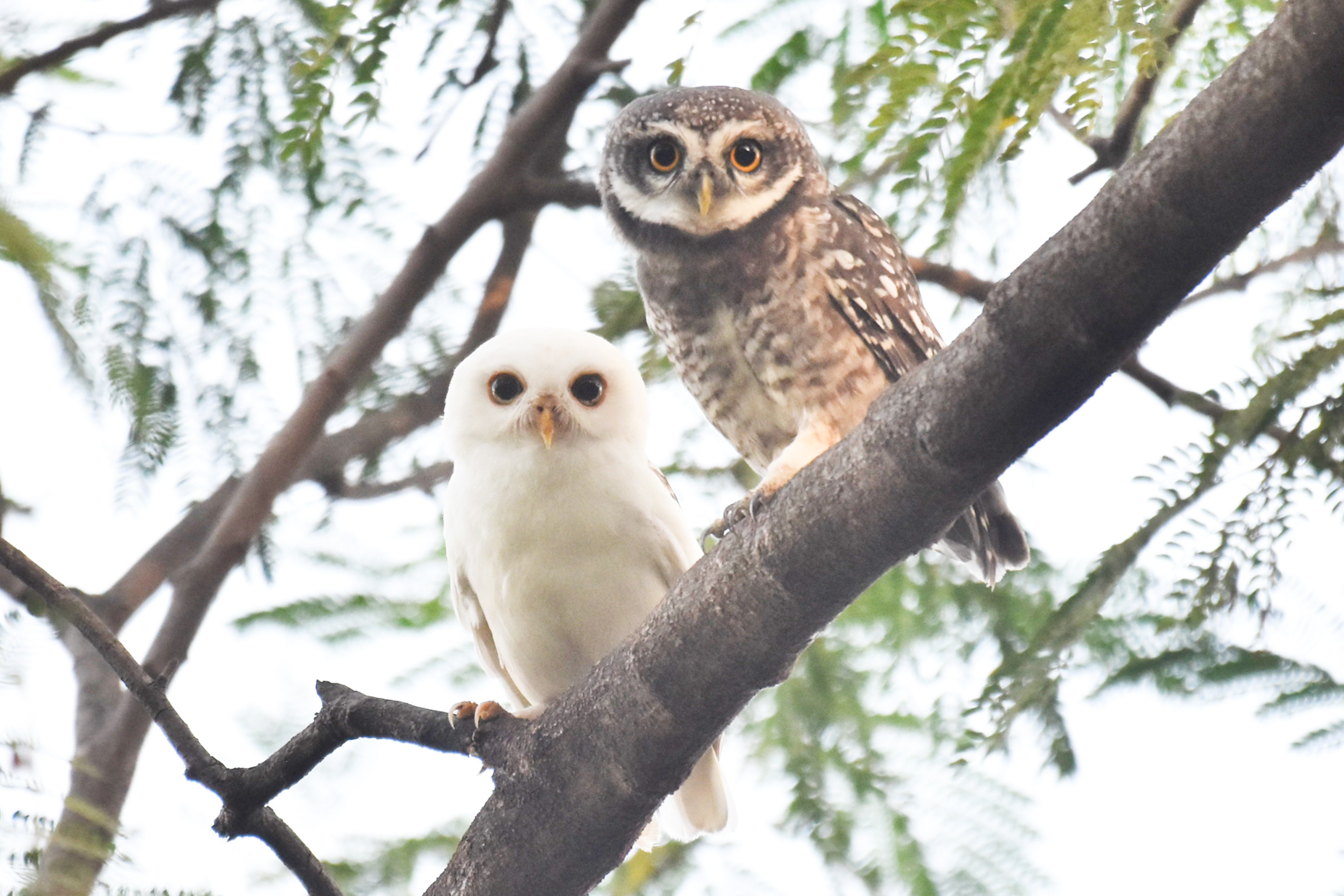
Comprehending the two terms in detail requires an in-depth knowledge of the biological sciences. Also, finding a concrete definition of the two terms is difficult, given that they occur across many animal groups and have a range of genotypic and phenotypic causes and effects. However, here is a simplified explanation to learn about the basics of leucism and albinism and their differences.
In simple words, leucism is the condition where an animal exhibits partial pigmentation loss, resulting in patchy, white, or pale colouration. The pigmentation loss in leucism, however, unlike albinism (a similar appearing condition), never affects the eyes.
A wide range of conditions, or an interplay of several conditions in the body, like genetic mutations, can lead to leucism. Here, the pigment-producing cells are affected, leading to a lack of pigment production in hair, fur, scales, feathers, cuticles, etc. Leucism has been displayed across various animal groups like mammals, birds, reptiles, etc.
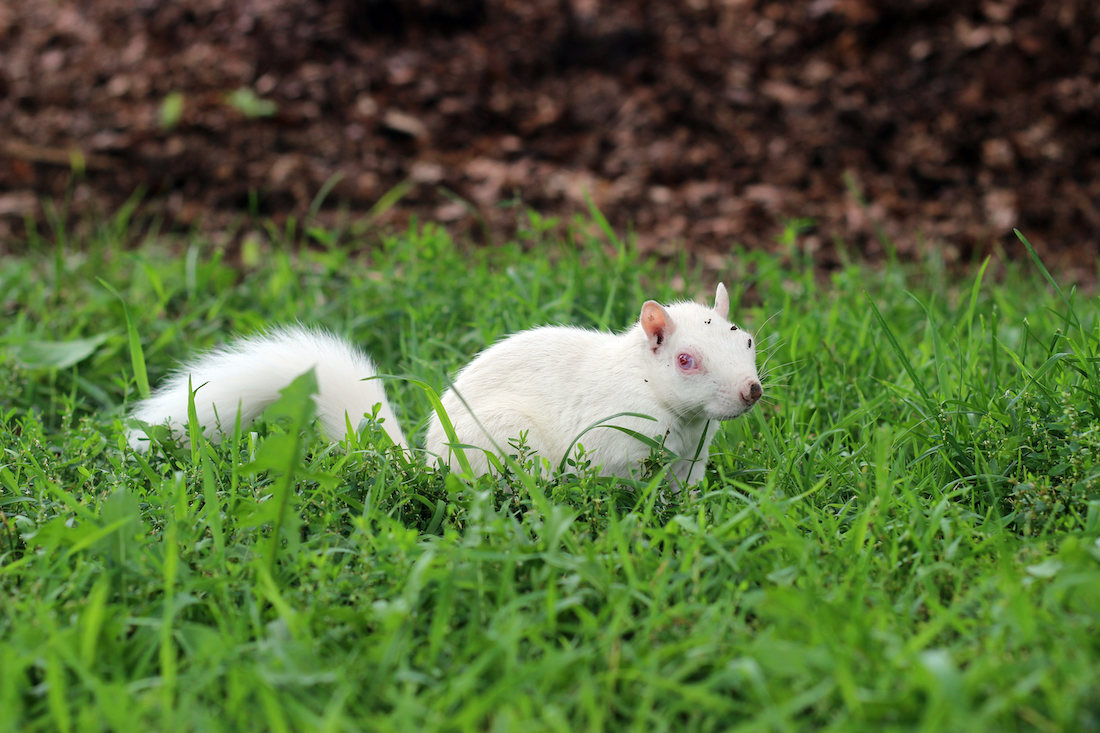
Albinism affects melanin production by melanocytes, where no melanin is produced by these cells due to a defect in the production of tyrosinase or other enzymes responsible for melanin production caused by genetic abnormalities. The effect of albinism is also seen in the eyes, where the absence of eye colour often makes the eyes appear red due to the underlying blood vessels becoming visible.
In species where colours are also produced by other non-melanocyte cells, the non-melanin pigments are produced as normal. However, in leucism, all kinds of pigment cells can be affected.
Leucism: Good Or Bad?
In nature, it is said that the fittest survive. The aim is to live long enough to successfully mate and pass on the genes to produce young ones. Colour aberrations might, however, interfere with this entire process. For example, a leucistic animal might lose its camouflage protection, get easily noticed by its predator, and be preyed upon before it gets a chance to pass on its genes to the newer generation. A leucistic bird might not be able to attract a suitable mate due to its lack of colour that serves to impress the oppositve sex. A reptilian or amphibian displaying leucism might suffer from physiological damage as white reflects the sun’s rays and prevents the cold-blooded animal from absorbing the much-needed heat to keep warm. However, not much research has been carried out to confirm the long-term effects of leucism on species, primarily due to the rarity of such traits in the wild.
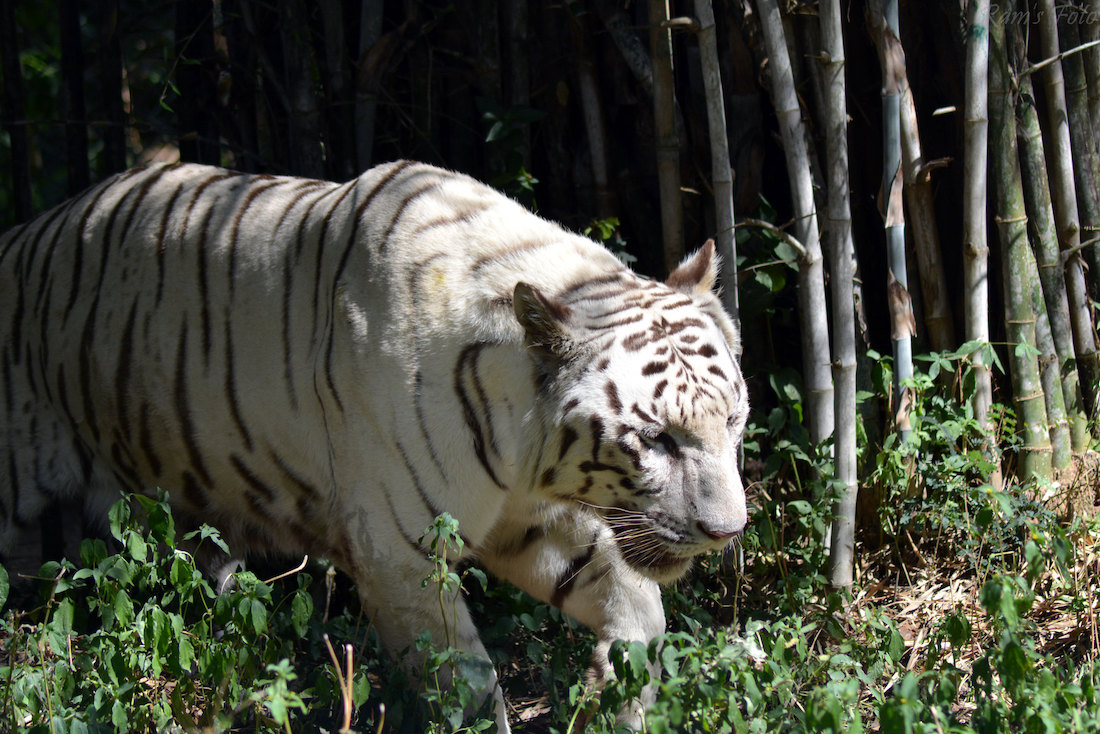
On occasions where humans interfere, such leucistic animals get a different treatment. Humans often regard albino or leucistic animals like white tigers and peacocks as attractive oddities and selectively breed them for display in zoos or to be kept as pets at home. In the long run, however, such selection by humans does more harm than good to the conservation of the species in the wild.
So, Why Leucism?
It is known that selection pressure works in nature by selecting only those genetic changes that render the animal more competitive in the wild. Animals with more robust genetic composition survive better and produce young ones of their kind, while those with weaker genes get eliminated. Yet, albinos and leucistic individuals are found across species in the wild, albeit in extremely low numbers. How do these animals survive, or why do they even exist?
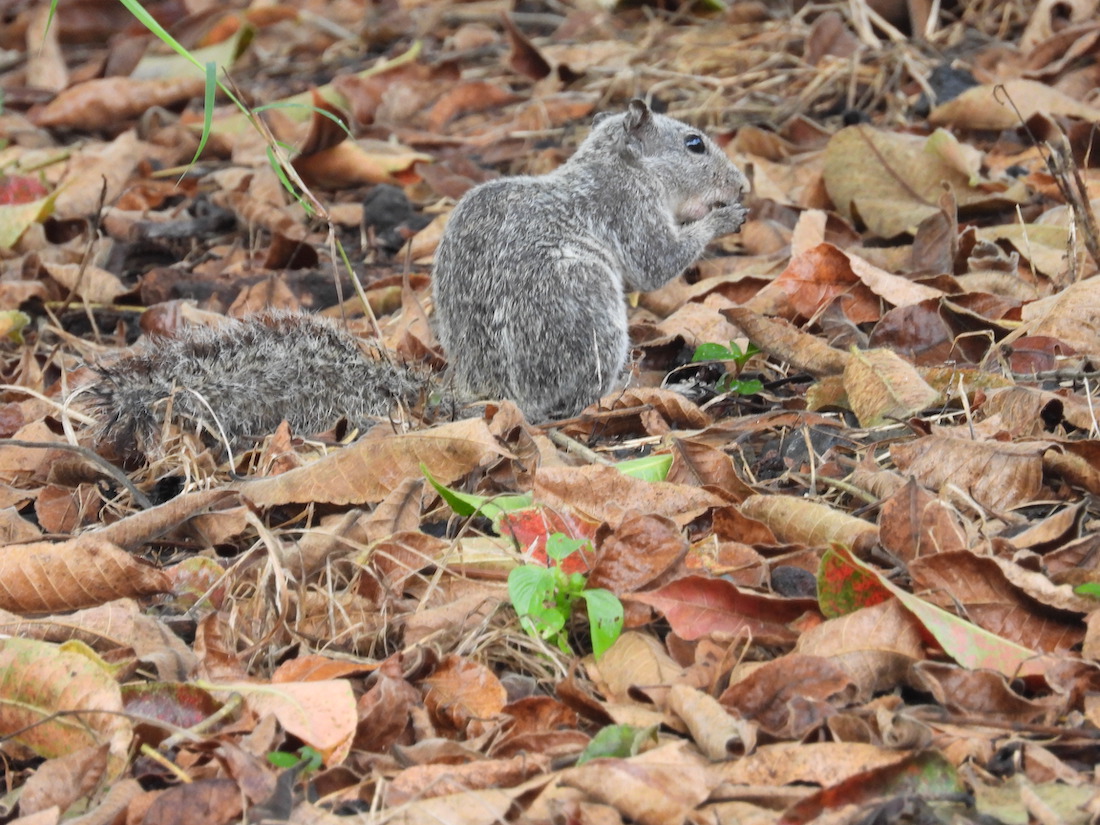
According to Dr Samson, past evidence and present observations of leucistic squirrels indicate that the populations of these rodents living in semi-forested habitats and human-dominated landscapes are more vulnerable to developing the leucistic trait. Possibly, the isolation of such populations leads to more inbreeding, fostering genetic abnormalities and weakening the gene pool in the long run. For a similar reason, the recent camera capture of a rare golden tiger in the Kaziranga National Park by a photographer raised the concern of tiger conservationists. According to them, the presence of such golden tigers, the result of the expression of a recessive genetic trait, could signify inbreeding, which is not good news for tigers.
A lot still remains to be known about leucism in animal populations, and the rarity of leucistic individuals makes studies on them even more difficult. However, if inbreeding is the reason behind the condition, corrective steps must be taken. The species must have good habitat and connectivity to ensure healthier, more viable future populations.


This article provides valuable insights into leucism and melanism, which I believe will serve as an encouragement for future research endeavors. Additionally, it sheds light on the impacts of the pet trade associated with these phenomena. I posit that through genetic studies, we can better understand and manage leucism and melanism. Henceforth, I propose referring to this condition as genetic in nature.
The entire article was very usefull informations about the difference between leucism and albinism. But unfortunately not much studies have been carried in this regard. Good work by Dr.Samson Arockianathan.
Dr. A. Samson always very good wildlife conservators, Rare sighting or species can detect only whenever thinking about research, so Dr. Samson have been published lot of papers on rare species or rare sighting from Tamilnadu state. Now you have started the research apart from Tamilnadu state. Regular research everybody can do but rare research can only very rare person so you are Very rare person Very nice please keep continue and do rare Research.
Good , usefull its genitic changes right. Leucism…so its not good for the Species kno? . Fine Nice Sir. Your dedication towards the work its really inspiring, wish you many years of achivievement of your goal and succuess and keep aspiring….🍫💐
Nice article Dr.Samson, a new add on to your extant literature on leucism and related content. Maybe venturing more into its physiology would tell a strong tale in future! Best wishes in advance.
Congraulation Dr. Samson.
This article give clear information about leucism and albinism, and need more research these subject , particularly genetic studies on leucism and albinism animal.